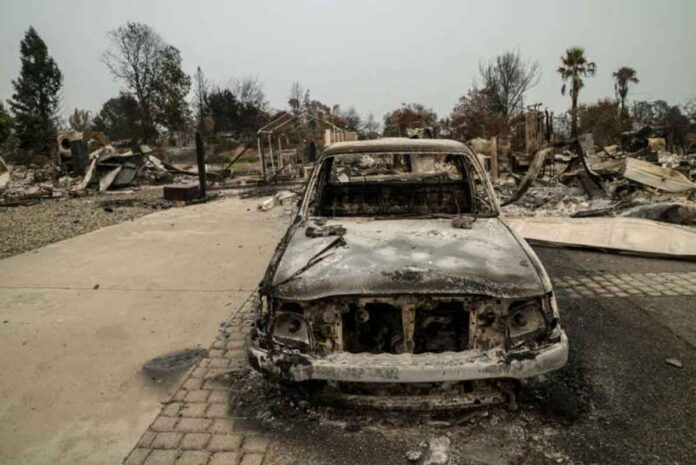According to researchers in a review paper that highlights the need for more research in the area, as the frequency of wildfires has increased, so have pollutants in the waters from burned watersheds.
“The effects of fire burning not only forests and grasslands, but also houses, vehicles, and other man-made material,” said Stephen LeDuc of the US Environmental Protection Agency’s Center for Public Health and Environmental Assessment. “Only a few studies of pollutants mobilised from these types of fires have been conducted.”
LeDuc is one of the coauthors of the new paper, which was published today in Water Resources Research.
The paper examines the trends in water after wildfires as documented in 184 scientific papers published since 1980. Among the trends they discovered was that stream flow, sediments, and water temperature often increase for a few years after a wildfire. Nutrients are frequently increased, as are toxic metals and some organic chemicals, which can reach concentrations 10 to 100 times higher than pre-fire levels.
Some post-fire water chemicals, such as arsenic, can exceed regulatory limits even in treated drinking water. The review cites reports of elevated levels of the carcinogen benzene in tap water after the burning of houses and vehicles in the town of Paradise, California. Researchers also discovered higher concentrations of metals in the ash from these fires, which may have an impact on runoff.
The review discovered that little research has been done on the types of pollutants produced by urban wildfires. This puts water managers and planners at a disadvantage when dealing with the aftermath of a fire.
“We highlight this as a significant gap in the scientific understanding of fire effects,” LeDuc said.
“The main reason for the knowledge gap, in my opinion, is the challenge of establishing an urban water quality monitoring programme on short notice, such as after a fire,” said Dennis Hallema, a hydrologist at Desert Research Institute in Las Vegas who was not involved in the study. “There’s a lot of interest, but successful water quality monitoring efforts come from projects that are approved on time.”
The study also looked at how wildfires affect the surrounding ecosystem.
“Fire frequency is increasing in places like the western United States, due in part to climate change,” said LeDuc. “There is potential for areas burned by fire to become longer-term stressors to water quality if the previous vegetation is slow to recover or fails entirely.” “However, burned areas could be targeted for restoration efforts like erosion control or plantings.” The Pueblo of Santa Clara made a restoration effort following the Las Conchas Fire in 2011.
The authors hope that their review will assist water quality managers and communities in planning for and recovering from the effects of wildfires on their water.

